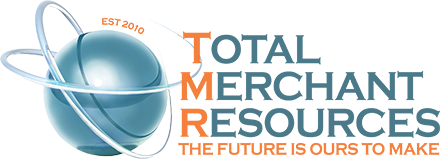
Small businesses often face big decisions about equipment purchases. Whether it’s upgrading machinery, replacing outdated tools, or expanding operations, finding a cost-effective solution is crucial. Equipment leasing has emerged as a popular choice for many small businesses, offering numerous benefits that help them stay competitive.
Leasing equipment allows businesses to access the tools they need without large upfront costs. This is a great advantage, especially for businesses wanting to conserve cash or keep their finances flexible. Leasing helps balance budgets and ensures access to high-quality equipment without breaking the bank.
Another significant benefit of leasing is the opportunity to stay up-to-date with the latest technology. This means businesses can operate efficiently and adapt to changes quickly. Understanding how equipment leasing can meet your business needs is essential for making smart financial decisions and ensuring long-term success.
Understanding Equipment Leasing Basics
Equipment leasing is a popular option that allows businesses to use equipment without buying it outright. This involves paying a rental fee over a set period, which can be more manageable than a lump sum purchase. It’s important to understand the types of leases available to choose the best fit for your business.
Operating leases are ideal for equipment that can become outdated quickly. These leases typically have lower monthly payments and give businesses the option to upgrade at the end of the lease term. This keeps equipment current without long-term ownership costs.
On the other hand, capital leases work like a loan, with the option to purchase the equipment at the end of the lease term. This is suitable for equipment with a long useful life. The business is responsible for maintenance, and the lease can appear as an asset on the balance sheet.
Another term to be familiar with is the fair market value (FMV) lease. This allows businesses to purchase the equipment at its current market value when the lease ends or to return it. It gives flexibility in decision-making at lease maturity.
Understanding these leasing types helps businesses make informed choices about their equipment needs. By opting for leases that meet current business demands, companies can manage resources efficiently and plan for future growth effectively.
Financial Advantages of Leasing
Leasing equipment can bring several financial benefits that help small businesses manage their resources more effectively. One of the main advantages is the low initial cost. Buying equipment outright often requires a large upfront payment, which can strain a business’s cash flow. Leasing spreads these costs over time, making it easier to budget and forecast expenses.
Monthly lease payments are generally lower compared to loan payments for buying equipment. This frees up capital to invest in other critical areas like marketing or product development. By leasing, businesses can maintain better liquidity, which enhances financial stability and flexibility.
Leasing also offers potential tax benefits. Lease payments are often fully deductible as business expenses, which reduces taxable income and helps manage cash flow. Always consult with a tax advisor to understand specific savings before committing to a lease agreement.
There are also no large repair bills to worry about. Many leases include maintenance and service in the agreement, protecting businesses from unexpected repair costs. This peace of mind means businesses spend less time worrying about machinery and more time focusing on growth.
Flexibility and Up-to-Date Technology
Leasing equipment offers significant flexibility, allowing businesses to stay ahead with the latest technology. Technological advancements occur rapidly, and buying equipment often leads to outdated resources in a short time. Leasing provides an effective solution by ensuring businesses can update equipment as newer models become available.
Start by choosing leasing options that allow periodic upgrades. Many leases have terms enabling businesses to swap old equipment for new, keeping technology cutting-edge without the hassle of reselling or recycling outdated machinery. This means the business is always equipped with the latest tools, enhancing productivity and efficiency.
Leasing encourages continuous improvement by fostering an environment where upgrading is expected. Businesses avoid the sunk costs associated with ownership and instead focus on operational efficiency through technology.
For instances where specific equipment is needed temporarily or seasonally, leasing provides a hassle-free solution. Once the lease term ends, the equipment can be returned without the burden of unneeded inventory. This adaptability caters to dynamic business needs without overcommitting resources.
By keeping access to the newest, most effective tools, leasing helps businesses remain competitive. The ability to adapt swiftly to changes can drive success. Ultimately, leasing offers the flexibility needed to thrive in a technology-driven landscape.
Simplified Maintenance and Management
Equipment leasing simplifies maintenance and management, offering ease and peace of mind for businesses. When owning equipment, businesses face the responsibility of maintaining and repairing machinery, often requiring significant resources in terms of time and money. Leasing dramatically reduces these burdens.
Most lease agreements include maintenance and service terms. This means the leasing company handles repairs and upkeep, allowing the business to focus on core activities. Knowing experts will handle maintenance concerns lowers stress and ensures equipment runs smoothly, reducing downtime.
Another advantage is cost predictability. Maintenance fees are usually included in the lease payment, eliminating surprise expenses. Businesses can plan budgets more accurately, keeping finances clear and organized without unexpected repair bills.
Consider the operational ease leasing brings. Leasing agreements often offer replacement equipment during repairs, ensuring continuity. This means operations aren’t halted due to malfunctioning tools, supporting productivity and workflow efficiency.
Businesses benefit from access to specialized support. Leasing providers are experts in the equipment they supply, so they can provide guidance on best practices and troubleshooting. This resource ensures equipment remains in optimal condition, extending usability and performance.
By taking advantage of the simplified maintenance that leasing offers, businesses can streamline operations and focus on growth and success.
Conclusion
Equipment leasing presents several key benefits, making it a strategic choice for businesses aiming to manage resources wisely. From understanding leasing basics to exploring financial advantages, each aspect of leasing offers distinct opportunities for growth and efficiency. The flexibility to access the latest technology ensures businesses remain competitive and fully equipped to adapt to ever-evolving market demands.
Leasing also offers a practical solution to maintenance and management challenges. With professionals handling these tasks, operations stay smooth, and businesses save valuable time and resources. The aggregated benefits simplify business expenditures, allowing for calculated growth strategies.
When ready to explore how equipment leasing can benefit your business, Total Merchant Resources provides business loan advance options to meet your needs. Our expertise in leasing and business funding ensures effective strategies that empower businesses to reach new heights.
Contact us today to learn how our leasing options can drive your business forward, keeping you equipped for success every step of the way.



